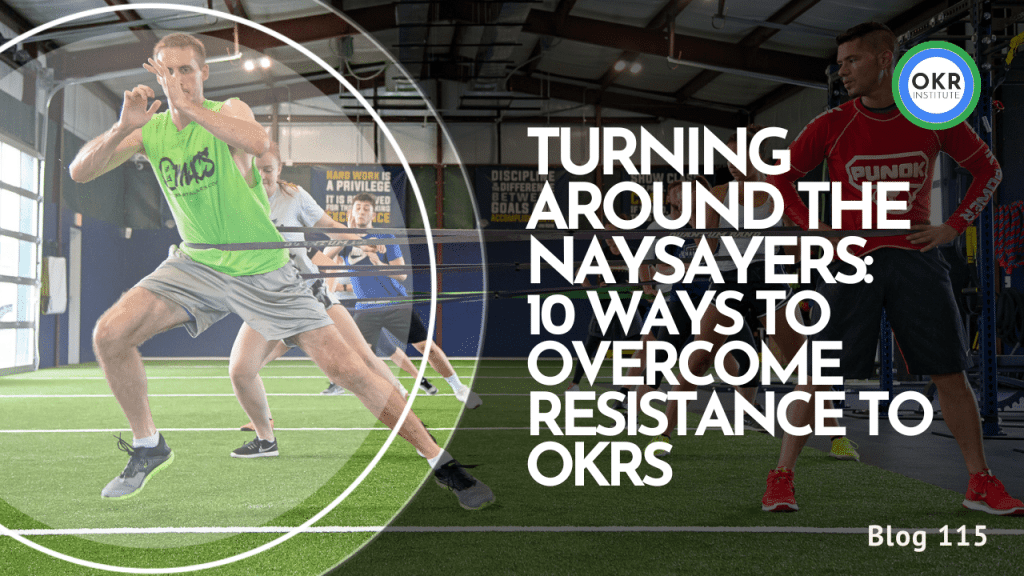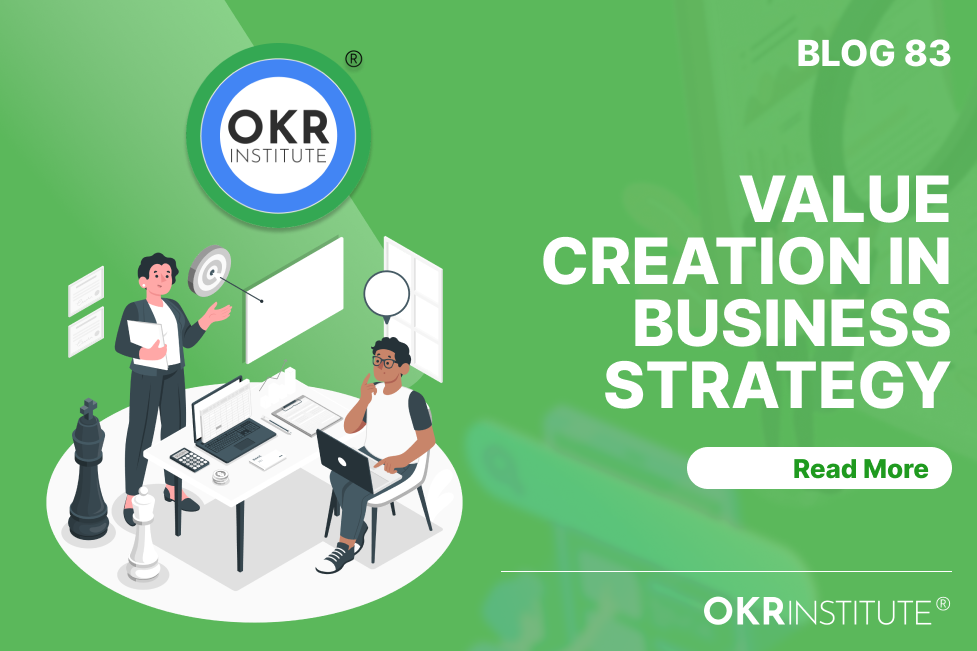The 12 Biggest Pitfalls of Setting Ambitious OKRs (and How to Avoid Them)

Setting Clear and Achievable Goals
Establishing clear, specific, and achievable objectives is the foundation of an effective OKR system. Team leaders must strike a delicate balance between setting ambitious goals that challenge and motivate the team while ensuring they are realistic and attainable. Overly ambitious objectives can lead to frustration and disengagement, while goals that lack ambition may fail to drive meaningful progress.
A well-crafted objective should clearly define the desired outcome, be specific enough to guide actions and decisions, and be measurable to track progress effectively. Utilizing goal-setting frameworks like SMART (Specific, Measurable, Achievable, Relevant, and Time-bound) can help team leaders craft objectives that meet these criteria.
Additionally, involving the team in the goal-setting process can foster a sense of ownership and commitment, as well as leverage their expertise and insights. By collaborating with team members, leaders can ensure that objectives align with their capabilities and resources, increasing the likelihood of successful achievement.
Aligning with Organizational Strategy
Aligning team OKRs with the broader organizational goals is crucial for ensuring coherence and contribution to the overall strategy. Team leaders must understand the company’s overarching objectives and priorities, and then translate them into specific, measurable, and relevant goals for their teams. This alignment helps ensure that the team’s efforts are focused on initiatives that directly support the organization’s strategic direction.
One effective approach is to cascade organizational goals down to the team level. This involves breaking down high-level objectives into more specific and actionable goals for each team or department. By cascading goals, team leaders can ensure that their team’s OKRs are directly linked to and support the achievement of the organization’s broader goals.
Maintaining this alignment is an ongoing process that requires regular communication and collaboration between team leaders and senior management. As organizational priorities shift or new strategic initiatives emerge, team OKRs may need to be adjusted or realigned to ensure they remain relevant and aligned with the company’s evolving goals.
Effective alignment also helps foster a sense of purpose and direction within the team, as members can clearly understand how their individual efforts contribute to the larger organizational objectives. This can enhance motivation, engagement, and a sense of shared ownership in achieving the company’s vision.
Effective Communication
Clear and consistent communication is vital for successful implementation and achievement of OKRs. Team leaders must ensure that the objectives and key results are communicated effectively to every team member, leaving no room for ambiguity or misunderstanding. This involves explaining the rationale behind the OKRs, their alignment with organizational goals, and the expected outcomes.
Moreover, it is crucial to clarify each team member’s role and how their individual contributions tie into the collective objectives. Team leaders should encourage open dialogue and create a safe environment where team members can ask questions, seek clarification, and provide feedback on the OKRs.
Effective communication also involves selecting the appropriate channels and methods for disseminating information about OKRs. This could include regular team meetings, one-on-one discussions, written documentation, or digital platforms. Visuals, such as dashboards or progress charts, can be powerful tools for communicating progress and keeping everyone on the same page.
Ultimately, effective communication fosters a shared understanding, promotes transparency, and ensures that everyone is working towards the same goals, maximizing the chances of achieving the desired outcomes.
Progress Tracking and Measurement
Regularly tracking and reviewing the progress of OKRs is crucial for their success. Team leaders must establish a cadence for monitoring key results and ensure that progress is measured accurately. This requires the use of appropriate tools and methods that align with the specific objectives and metrics.
Effective progress tracking involves setting clear milestones and checkpoints to assess whether the team is on track to achieve the desired outcomes. It’s essential to identify and address any roadblocks or challenges that may hinder progress early on, allowing for timely course corrections or adjustments.
Team leaders should leverage data-driven approaches to measure key results objectively. This may involve utilizing project management software, dashboards, or custom tracking tools tailored to the team’s specific needs. Quantitative metrics should be complemented with qualitative assessments to gain a comprehensive understanding of progress.
Additionally, it’s important to involve the team in the tracking process, encouraging transparency and open communication. Regular progress updates and discussions can foster a sense of accountability and ownership among team members, further driving progress towards the established objectives.
Adapting to Change
In today’s dynamic business environment, change is inevitable. External factors such as market shifts, new regulations, or technological advancements can impact the relevance or achievability of previously set OKRs. Internally, reorganizations, shifts in priorities, or resource constraints may also necessitate adjustments. Effective team leaders must embrace flexibility and adaptability to navigate these changes successfully.
Regularly reviewing and evaluating OKRs is crucial to ensure their continued relevance and alignment with evolving circumstances. Leaders should be proactive in identifying potential changes that may affect their team’s objectives and be prepared to adjust or redefine OKRs accordingly. This may involve modifying key results, revising timelines, or even reprioritizing objectives altogether.
Maintaining an open and transparent communication channel with the team is essential during times of change. Leaders should clearly communicate the reasons for adjustments, seek input and feedback, and ensure that everyone understands the revised goals and expectations. Involving the team in the decision-making process not only fosters buy-in but also leverages their collective expertise and insights.
Adaptability also extends to resource allocation. As circumstances shift, leaders may need to reallocate resources, such as personnel, budgets, or tools, to support the revised OKRs effectively. Flexibility in resource management ensures that the team has the necessary support to achieve their objectives, even in the face of changing conditions.
Ultimately, adapting to change requires a mindset of continuous improvement and a willingness to embrace uncertainty. Team leaders who can navigate change with agility and resilience not only increase the likelihood of achieving their OKRs but also foster a culture of innovation and responsiveness within their teams.
Team Motivation and Engagement
Maintaining team motivation and engagement is crucial when working with OKRs, especially when objectives are challenging or progress is slow. Team leaders must employ various strategies to keep their team members inspired, focused, and committed to achieving the set goals.
One effective approach is to foster a sense of purpose and meaning behind the OKRs. By clearly communicating how the team’s efforts contribute to the organization’s larger mission and vision, team members are more likely to feel invested and motivated. Sharing success stories and celebrating wins, no matter how small, can also boost morale and reinforce the team’s progress.
Regular check-ins and one-on-one meetings provide opportunities for team leaders to understand individual motivations, address concerns, and offer support. Personalizing feedback and recognizing individual contributions can go a long way in keeping team members engaged and valued.
Encouraging collaboration and fostering a positive team culture can also enhance motivation. Creating a safe environment where team members can openly share ideas, ask questions, and support one another can foster a sense of camaraderie and collective ownership of the OKRs.
When objectives are particularly challenging or progress is slow, team leaders must remain transparent and realistic while maintaining a positive outlook. Acknowledging the difficulties and celebrating small wins can help prevent discouragement. Adjusting goals or timelines, if necessary, can also alleviate pressure and maintain momentum.
Providing opportunities for growth and development can further motivate team members. Offering training, mentorship, or stretch assignments aligned with the OKRs can help team members acquire new skills and feel invested in their personal and professional growth.
Ultimately, effective team motivation and engagement require a combination of clear communication, recognition, support, and a commitment to fostering a positive and collaborative team culture.
Balancing Short-term and Long-term Goals
Striking the right balance between short-term achievements and long-term strategic goals is a critical challenge for team leaders working with OKRs. While it’s essential to celebrate and recognize the team’s immediate successes, it’s equally important to maintain a broader perspective and ensure that these short-term wins contribute to the organization’s long-term vision and strategy.
One of the risks of an excessive focus on short-term results is the potential for tunnel vision. Teams can become so fixated on achieving immediate objectives that they lose sight of the bigger picture, neglecting the strategic initiatives and investments necessary for future growth and sustainability. This narrow focus can lead to short-sighted decision-making, resource allocation that favors quick wins over long-term investments, and a failure to anticipate and prepare for emerging trends or disruptive forces in the industry.
To avoid this pitfall, team leaders must strike a delicate balance, ensuring that their OKRs encompass both short-term and long-term goals. This requires a holistic approach that considers the interdependencies between immediate objectives and long-term strategic priorities. By aligning short-term initiatives with the organization’s overarching vision and strategy, teams can work towards achieving immediate results while simultaneously laying the groundwork for future success.
Effective leaders should encourage their teams to think beyond the current quarter or year, fostering a mindset that recognizes the importance of long-term planning and strategic foresight. This may involve allocating resources towards research and development, investing in employee training and development, or exploring new markets or product lines that may not yield immediate returns but position the organization for future growth.
Ultimately, achieving this balance requires a deep understanding of the organization’s strategic objectives, a clear communication of priorities, and a willingness to make tough decisions that may involve sacrificing short-term gains for the sake of long-term success. By maintaining a balanced perspective, team leaders can ensure that their teams remain focused on both immediate results and long-term strategic goals, driving sustainable growth and success for the organization.
Resource Allocation
Effective resource allocation is crucial for achieving team OKRs. Leaders must ensure that their teams have access to the necessary tools, time, and support required to accomplish their objectives. This involves carefully assessing the tasks at hand, identifying potential bottlenecks or constraints, and strategically allocating resources to address them.
One of the primary challenges in resource allocation is prioritization. With limited resources, leaders must prioritize the most critical objectives and allocate resources accordingly. This requires a deep understanding of the team’s strengths, weaknesses, and the relative importance of each objective. Prioritization should be based on factors such as strategic importance, potential impact, and alignment with organizational goals.
Leaders should also consider the specific skills and expertise required for each objective and allocate resources accordingly. This may involve assigning team members with the appropriate expertise to specific tasks or providing training and development opportunities to enhance their capabilities.
Time is another valuable resource that must be managed effectively. Leaders should ensure that team members have dedicated time to focus on their OKRs, without being overwhelmed by competing priorities or distractions. This may involve adjusting workloads, streamlining processes, or implementing time management strategies.
In addition to human resources, leaders must also consider the necessary tools and technology required for successful OKR implementation. This may include project management software, collaboration tools, data analysis platforms, or specialized equipment. Providing the right tools can significantly enhance productivity, collaboration, and decision-making capabilities.
Effective resource allocation also involves anticipating and addressing potential roadblocks or constraints. Leaders should proactively identify potential bottlenecks and allocate resources accordingly, ensuring that the team has the necessary support to overcome obstacles and maintain momentum.
Ultimately, efficient resource allocation is about striking the right balance between available resources and the demands of the OKRs. Leaders must continuously evaluate and adjust their resource allocation strategies to ensure that their teams have the best possible chance of achieving their objectives.
Continuous Feedback and Iteration
Providing continuous feedback and iterating on OKRs is crucial for teams to learn from their successes and failures, and to improve future cycles. OKRs should not be set in stone; they are meant to be dynamic and adaptable to changing circumstances.
Team leaders should foster an environment where feedback is encouraged and welcomed. This includes feedback from team members on the OKRs themselves, as well as feedback on their progress and challenges. Regular check-ins and open discussions can help identify areas for improvement or potential roadblocks early on.
Additionally, team leaders should be open to adjusting or modifying OKRs as needed. If an objective or key result is no longer relevant or achievable due to changing circumstances, it should be revised or replaced. This flexibility ensures that the team’s efforts remain aligned with the organization’s priorities and goals.
Iteration is also crucial for continuous improvement. After each OKR cycle, teams should take the time to reflect on what worked well and what didn’t. They should analyze the data and metrics collected, and use these insights to refine their approach for the next cycle. Celebrating successes and learning from failures can help teams build on their strengths and address weaknesses.
By embracing a culture of continuous feedback and iteration, teams can stay agile and responsive, while also fostering a growth mindset that encourages learning and improvement.
Accountability and Ownership
Fostering a sense of accountability and ownership within the team is crucial for the successful achievement of OKRs. Team leaders must create an environment where each member takes responsibility for their contributions and feels invested in the collective goals.
One effective strategy is to involve the team in the goal-setting process, allowing them to provide input and feedback. When individuals have a hand in shaping the objectives, they are more likely to feel a sense of ownership and commitment to their attainment.
Clear communication of roles, responsibilities, and expectations is also essential. Team leaders should ensure that every member understands their specific tasks and how their efforts contribute to the overall objectives. This clarity helps individuals internalize their accountability and take ownership of their work.
Regular check-ins and progress reviews can reinforce accountability. During these sessions, team leaders should celebrate successes, address challenges, and provide constructive feedback. By highlighting both achievements and areas for improvement, individuals are motivated to maintain their efforts and take responsibility for their performance.
Implementing accountability mechanisms, such as performance tracking systems or peer-to-peer accountability partnerships, can further enhance ownership. These mechanisms provide transparency and create a culture of mutual support and accountability within the team.
Ultimately, fostering accountability and ownership requires a balance of empowerment and support. Team leaders should empower individuals to take initiative and make decisions while providing the necessary guidance, resources, and feedback to ensure they stay on track and feel supported in their efforts.
Overcoming Resistance to Change
Implementing OKRs often requires a significant shift in mindset and working practices, which can lead to resistance from team members. This resistance can stem from various factors, such as fear of change, lack of understanding, or a perceived threat to established routines. Overcoming this resistance is crucial for successful OKR adoption and execution.
One effective strategy is to clearly communicate the rationale behind adopting OKRs and the benefits it can bring to the team and the organization. Addressing concerns and misconceptions early on can help alleviate anxiety and build buy-in. Involving team members in the process of setting OKRs and gathering their input can also foster a sense of ownership and commitment.
Change management techniques, such as providing adequate training, coaching, and support, can help team members develop the necessary skills and confidence to work effectively with OKRs. Celebrating small wins and highlighting early successes can reinforce the positive impact of the change and encourage further adoption.
It’s also important to acknowledge that resistance is a natural part of the change process and to approach it with empathy and patience. Leaders should be prepared to address concerns, offer guidance, and make adjustments as needed to ensure a smooth transition.
Ultimately, overcoming resistance requires a combination of clear communication, active involvement, ongoing support, and a willingness to adapt the implementation approach as needed. By addressing mindset and cultural shifts proactively, team leaders can create an environment that embraces change and maximizes the benefits of OKRs.
Consistency and Discipline: Cornerstones of OKR Success
Maintaining consistency and discipline in the OKR process is crucial for achieving desired outcomes. Establishing routines and habits around OKRs can help teams stay on track and make progress towards their objectives. Consistency ensures that OKRs remain a priority and are not overshadowed by other competing demands or distractions.
Regular check-ins and adjustments are essential for keeping OKRs relevant and aligned with changing circumstances. Teams should have dedicated meetings or check-in points to review progress, identify roadblocks, and make necessary adjustments to their key results or initiatives. This ongoing evaluation helps teams stay agile and responsive, ensuring that their efforts remain focused on the most impactful areas.
Discipline is also vital in the OKR process. It involves holding team members accountable for their commitments and contributions to the objectives. Leaders should foster an environment where team members take ownership of their roles and responsibilities, and where missed deadlines or underperformance are addressed promptly.
Establishing routines and habits around OKRs can help reinforce consistency and discipline. This could include setting regular meetings, creating reporting templates, or incorporating OKR updates into existing processes. By making OKRs a consistent part of the team’s workflow, they become ingrained in the culture and mindset, increasing the likelihood of sustained success.
Cross-functional Collaboration
Achieving organizational objectives often requires collaboration across different teams and departments. However, breaking down silos and fostering cross-functional collaboration can be a significant challenge for team leaders working with OKRs.
In many organizations, teams and departments operate in isolation, focused on their specific goals and priorities. This siloed approach can lead to a lack of alignment, duplication of efforts, and missed opportunities for synergy. Effective cross-functional collaboration is crucial for achieving shared objectives and maximizing the impact of OKRs.
Team leaders must actively promote collaboration by creating opportunities for cross-functional teams to come together, share insights, and align their efforts. This can involve regular cross-functional meetings, joint planning sessions, and the establishment of cross-functional working groups or task forces.
Encouraging open communication and knowledge sharing across teams is essential. Team leaders should foster an environment where team members feel comfortable sharing their expertise, ideas, and concerns, and where diverse perspectives are valued and incorporated into decision-making processes.
Establishing clear roles, responsibilities, and accountability frameworks is also critical when working across teams and departments. Team leaders must ensure that everyone understands their contributions to the shared objectives and that there is a clear mechanism for resolving conflicts or addressing roadblocks.
Furthermore, team leaders should leverage technology and collaboration tools to facilitate cross-functional collaboration. Platforms for project management, document sharing, and virtual communication can help bridge physical and organizational boundaries, enabling teams to work together seamlessly.
Ultimately, effective cross-functional collaboration requires a mindset shift from a siloed, team-centric approach to a more holistic, organizational perspective. Team leaders must champion this shift and lead by example, demonstrating the value of collaboration and the power of collective effort in achieving ambitious OKRs.
Data-Driven Decision Making
Effective use of data is crucial for making informed decisions about key results and their impact on objectives. Team leaders must leverage data analysis and interpretation to gain insights, identify trends, and make data-driven choices. This involves collecting relevant data, analyzing it using appropriate methods and tools, and drawing meaningful conclusions that guide decision-making.
Data can provide valuable information about the team’s performance, progress towards key results, and areas that require attention or adjustment. By analyzing metrics, team leaders can identify patterns, bottlenecks, and opportunities for improvement. This data-driven approach helps to remove subjectivity and biases, allowing for more objective and fact-based decisions.
Furthermore, data-driven decision making enables team leaders to measure the impact of their decisions and strategies. By continuously monitoring and analyzing data, they can assess the effectiveness of their initiatives and make necessary adjustments or course corrections. This iterative process ensures that decisions are based on real-time information and contribute to the achievement of key results.
To leverage data effectively, team leaders must ensure that the right data is being collected and that it is accurate, reliable, and relevant to the objectives and key results. They should also have the necessary skills and tools to analyze and interpret the data, or collaborate with data analysts or experts who can provide valuable insights.
Ultimately, data-driven decision making empowers team leaders to make informed choices, optimize performance, and drive better outcomes. By embracing a data-driven mindset and fostering a culture of data-driven decision making within the team, leaders can navigate challenges more effectively and increase the likelihood of achieving their objectives and key results.
Learning and Development
One of the critical challenges team leaders face when working with OKRs is ensuring that their team members possess the necessary skills and knowledge to achieve the set objectives. Implementing OKRs often requires a shift in mindset and working practices, and it’s essential to provide ongoing training and development opportunities to upskill the team.
Effective learning and development programs can help team members better understand the OKR framework, develop goal-setting and progress tracking skills, and acquire any technical or domain-specific knowledge required to accomplish the key results. This could involve workshops, coaching sessions, online courses, or on-the-job training.
Moreover, as the team progresses through OKR cycles and faces new challenges, additional learning opportunities may arise. Team leaders should be proactive in identifying skill gaps and providing relevant training to ensure their team is equipped to tackle emerging obstacles and adapt to changing circumstances.
Continuous learning and development not only enhance the team’s ability to achieve OKRs but also foster a culture of growth and improvement. By investing in their team’s professional development, leaders can cultivate a more engaged and motivated workforce, better prepared to drive organizational success through the OKR framework.
CEO of the OKR Institute
Related Courses
Recent Posts
Tags
#OKR
#OKR Implementation
#okr pitfalls







